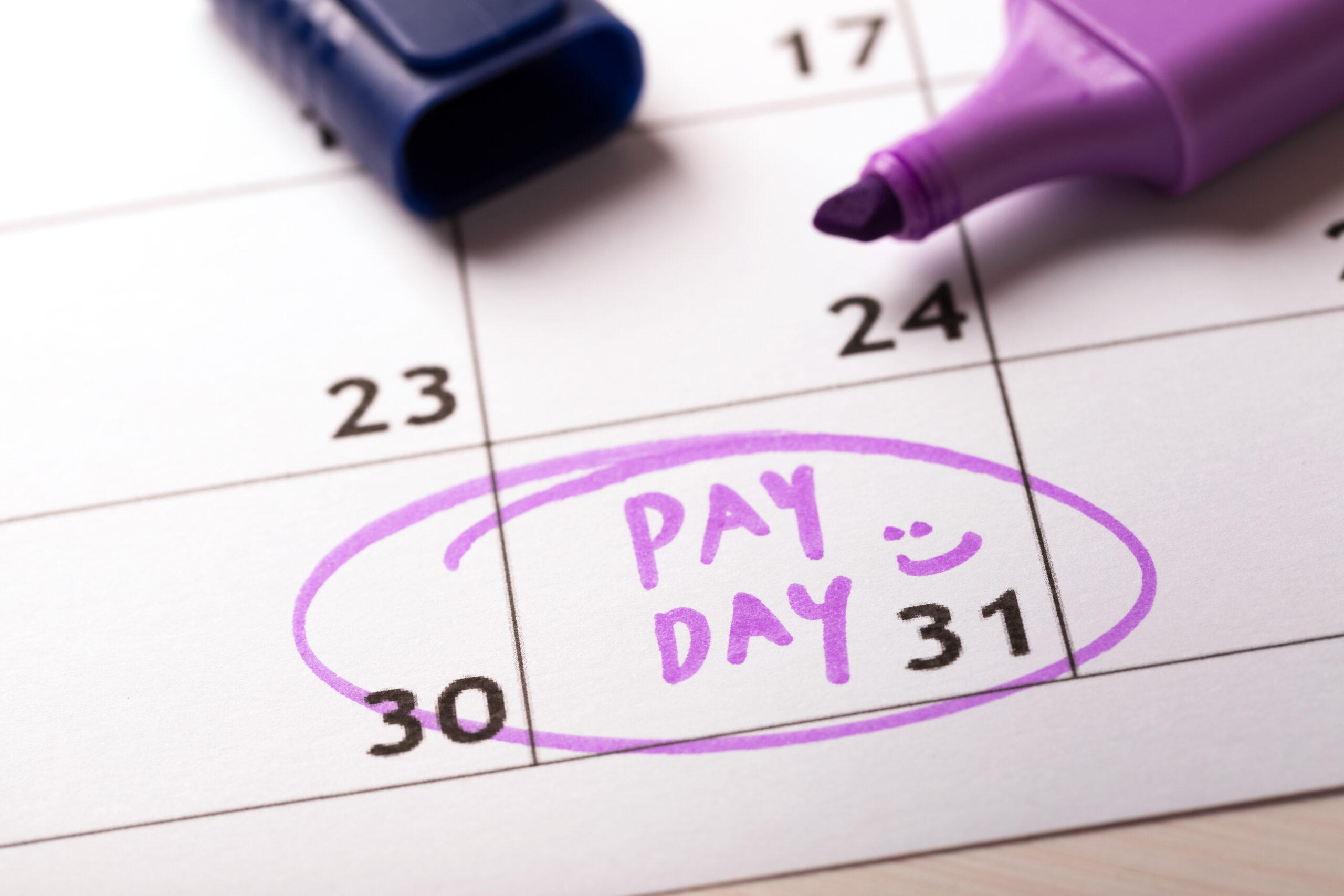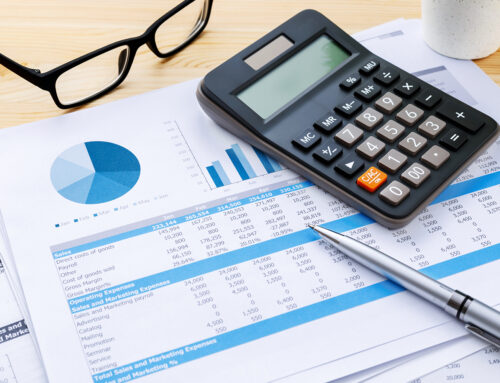 As the founder of a new nonprofit, you’re probably doing everything yourself and working for free instead of taking a nonprofit salary.
As the founder of a new nonprofit, you’re probably doing everything yourself and working for free instead of taking a nonprofit salary.
I get it.
Everything seems important and you really, really want to get your new organization up and running so you can do the work of changing lives.
But, unless you’re independently wealthy or have another source of income, you’ll need to pay yourself at some point.
Or pay yourself more than you are now so that your nonprofit provides you with a living wage.
Paying yourself can be an intimidating prospect. It can feel like a lot of money when you’re looking at the nonprofit’s tiny checkbook.
And it’s a big step for a young organization.
Fundraising becomes much more high-stakes. If the revenue stops coming in, will you be able to make payroll?
Obviously, lots of nonprofits have figured it out because millions of people are employed in the nonprofit sector.
So, how do you know when it’s time to pay yourself?
And how do you decide how much your nonprofit salary should be?
Going From Volunteer to Paid Employee
To get an idea of when you can start earning a nonprofit salary, you need to examine your budget and revenue forecasts.
If you don’t have a budget, well, that’s your first assignment.
Create an annual budget and work with your Board to adopt the budget.

Examine the revenue side of your budget and consider these kinds of questions:
- What forms of revenue do you have now or do you have planned?
- Are you entirely funded by donations?
- Do you charge for some services?
- Do you sell merchandise?
- How much money are you planning to bring in this year?
For many nonprofits, revenue is cyclical (i.e. it ebbs and flows) so the money does NOT come in month after month, conveniently at one-twelfth of the annual budget.
That would be so handy!
In many cases, as much as one-third of revenue comes in during November and December.
That means, if your fiscal year starts on January 1st, you’re waiting until the 4th quarter to see a significant portion of your annual revenue.
Of course, if you have a really good holiday fundraising season, you might start the new year with a financial surplus that covers salaries for at least the first few months, which gives you some breathing room while you raise money.
As you look at your revenue forecast in your budget, how much money is left over after you pay for program expenses each month?
If nothing is left over, you’ll have to increase revenue to afford to take on a nonprofit salary.
Definitely don’t assume that the money will somehow show up!
That’s not smart, and you’ll end up frustrated and resentful when you have to miss a paycheck because there’s not enough funds in the checking account to pay yourself.
💡Tip: If you need to start out with a small amount of money so that it’s right-sized for your budget, do that. You can always increase it later.
Build your salary into your budget as an expense and be sure your revenue projections are certain enough that you can cover your new nonprofit salary.
That means you need a well thought out fundraising plan so you know for sure where money is coming from.
By carefully planning, you’re making sure you personally get paid, but you’re also setting your organization up as sustainable for the future.
If you weren’t able to do the work and you had to hire someone, they’d expect to be paid – wouldn’t they? Of course they would.
Paying yourself is both good for the nonprofit and good for you.
When you’re paid a nonprofit salary, you’re less likely to burn out or have to put your nonprofit on hold while you earn money at a traditional job – which is tough and can really slow down the growth of your new nonprofit.
Now, as a founder, you may feel guilty for taking a nonprofit salary. Don’t!
… especially if you’re taking on Executive Director duties that leave you responsible for day-to-day operations, financial management, and even strategic execution.
Longstanding organizations that grow and thrive have paid employees in place who make sure all the many tasks involved in running a nonprofit get taken care of so the organization’s important work can continue.
Always remember that.
When to Start Thinking About Getting Paid
 If you expect to have money coming in beyond what you need to cover program expenses during your budget’s fiscal year, you’re ready to think about a nonprofit salary for yourself.
If you expect to have money coming in beyond what you need to cover program expenses during your budget’s fiscal year, you’re ready to think about a nonprofit salary for yourself.
If not, you need to focus on increasing your revenue.
If your organization is funded entirely by donations, as many nonprofit organizations are, you need more donors.
In that case, put your nonprofit salary goal on hold while you work on building your donor base.
If you DO have enough money coming in, you have a lot to consider before taking a plan to your Board for putting yourself on payroll.
It’s the Board’s job to hire and supervise the Executive Director, and the Board must approve any plan for a nonprofit salary.
A good rule of thumb is to start planning for a salary when your organization brings in revenue beyond the cost of programs consistently over a six-month period.
If you’re starting today, mark six months from now on your calendar and set a goal of making sure you have the fundraising strategies in place to keep bringing the money in over the next six-month period (and beyond).
Once you reach that date, you’re ready to bring a plan to the Board for your organization’s first nonprofit salary.
When you reach this milestone, it’ll be helpful to have a Human Resources (HR) professional on your Board or helping in an advisory capacity. Start working to recruit an HR professional if you do not already have one.
If you can’t find an HR professional to serve on your Board, look for a volunteer or someone connected to your organization who can help.
Your community foundation or United Way may be able to help you find the right professional to advise you as you go down this path.
Hire a consultant, if necessary (hey, we can help with this!).
There are so many ins and outs to hiring and maintaining a staff, many with legal considerations that you want to be sure to get right.
How Much Should a Nonprofit Founder Get Paid?
It really depends.
Start by researching what other Executive Directors of small nonprofits in your area get paid.
You can search job ads or simply ask around.
In the U.S., check out the 990s of small organizations to see how much they spend on compensation because the 990 includes the pay rate of anyone who receives more than $50,000 per year.
Once you know the going rate, you can start thinking about how much you want to pay yourself.
Candid offers a “Nonprofit Compensation Report” that might be helpful, and the Association of Fundraising Professionals also has a “Compensation Survey.” If your state has a nonprofit association, they might also have relevant information.
You’ll see a wide range of salaries for Executive Directors.
Large, established organizations may pay their Executive Director a six-figure salary.
But for small organizations, $50,000 to $65,000 is a more typical full-time salary. Side note: A healthcare stipend or benefits can add as much as 30% to the cost so keep that in mind.
Those numbers may seem huge when you think about having to consistently raise at least $50,000 a year just to cover your nonprofit salary.
That’s why, as a small, growing organization, it’s best to start small.
Start with an amount that you feel certain you can cover, then raise it as you can until you’re paying yourself the going market rate.
Baby Steps to a Full-Time Salary

If paying yourself a salary is too big of a leap for you right now, here are some baby steps you can take.
First, make sure that you’re being reimbursed for all your expenses related to the nonprofit.
Is the nonprofit paying for at least a portion of your bills for your cell phone and internet service that you use when doing work for it?
How about the laptop you purchased for nonprofit work?
If your nonprofit work requires travel, are you being reimbursed for the cost of gas and wear-and-tear on your car, according to relevant guidelines? In the U.S., you can go by the Internal Revenue Service’s standard mileage rate that they update each year.
Think about all the personal expenses you incur as you’re doing work for the nonprofit and create a process to get reimbursed.
This process might not seem like a big deal, but remember that the systems you put in place now are the systems the nonprofit will grow with.
Present the recommended process to the Board, so they can adopt a reimbursement policy.
I remember when I first started doing this. I kept two separate checkbooks – one for personal use and one for the organization’s use.
If I paid for something on my personal credit card, I would fill out the reimbursement form, sign it, and write a check to myself from the organization’s account.
It seemed silly, but I knew that co-mingling funds was a very bad idea from an accounting standpoint, so I did the paperwork.
Next, how about a stipend?
Think about proposing to your Board a stipend for yourself as you work toward raising enough money to fund a full-time salary.
Set a stipend amount that your organization can afford.
Is that $500 a month? $1,000 a month?
A stipend, which is taxed as income, doesn’t include paid time off. But it can provide some compensation while you work toward a nonprofit salary.
The next step, after earning a stipend while building up your fundraising, is a part-time salary.
Look at your numbers and see what makes sense. Can your organization afford to bring you on half-time?
If the full-time salary that is reasonable for your area is $58,000, can your organization afford $29,000?
If that is too steep, what about quarter-time? That would be $14,500, and your Board could include paid time off and, ideally, a healthcare stipend of at least $6,000.
Make a plan to get from quarter-time to half-time and then to three-quarter-time and, finally, full-time. It may take a couple of years, but you can get there!
What if Your Board Is Hesitant?
 Sometimes, Boards are reluctant to take on a salary for the Executive Director in the early years of the nonprofit.
Sometimes, Boards are reluctant to take on a salary for the Executive Director in the early years of the nonprofit.
Most of the time, they want to play it safe and not overextend themselves financially.
And because you’ve been doing the work for free, they may assume you can just continue working for free.
Also, your Board may want to wait until the organization has a six-month cash reserve and has all programs built out and running smoothly, so they’re “ready.”
That’s like waiting for the right time to have a baby.
Will the time for such a life-changing decision ever be truly right?
A play-it-safe mindset will never get you from volunteer to salaried Executive Director, and without a plan to pay employees, your organization will be limited in how much it can grow.
Some volunteer Executive Directors are content to remain an all-volunteer operation.
However, if you have big dreams that involve expanding services, you have to make a plan to pay yourself a nonprofit salary.
So put together a solid plan and get your Board on board with it.
In fact, get one of your Board members to help you draft the plan and ask them to help present it to the Board.
You’ll get better results and buy-in when you have a cheerleader in the group!
The Bottom Line
Preparing your organization for growth is essential for sustaining your work.
The majority of volunteer Executive Directors cannot go on indefinitely without taking a salary.
Most organizations cannot fulfill their missions without paid staff.
By growing your fundraising in support of a strategic plan that calls for paid employees, your organization can make a bigger impact on the community and change more lives.







Leave A Comment